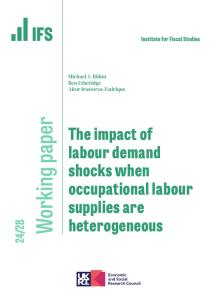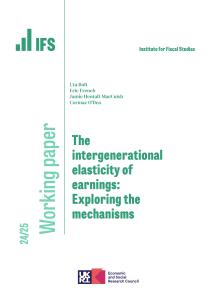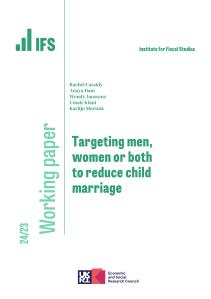Pay for some public sector workers has risen much more than the economy-wide average in recent years. In particular, public sector workers on lower rates of pay have seen substantial, inflation-beating pay rises. At the 25th percentile (i.e. for those earning more than only one-quarter of public sector workers), real public sector pay is now 16% higher than in 2007.
But higher earners have seen big reductions in pay in the public sector. At the 75th percentile (i.e. earning more than three-quarters of public sector workers), pay is now 8% lower in real terms than in 2007. Teachers and doctors have faced bigger cuts still, with doctors particularly hard-hit over the period since 2019.
It has long been the case that pay in the public sector is more compressed (with smaller gaps between low and high earners) than in the private sector. But the difference in pay inequality between public and private sectors has grown further following public sector pay deals that consistently prioritise lower-paid workers. Such divergence is unlikely to be sustainable and is almost bound to lead to recruitment and retention problems.
These are some of the key findings from new IFS research published today, funded by the Nuffield Foundation and abrdn Financial Fairness Trust, in advance of the general election expected later this year.
These trends in pay have a number of key implications:
- There has been a big decrease in inequality in pay in the public sector. Back in 2007, pay at the 75th percentile of the distribution was 140% higher than at the 25th percentile. By 2023, it was only 90% higher than the 25th percentile. In other words, the gap between relatively high and relatively low earners has fallen by more than a third since 2007.
- Men are disproportionately likely to work in high-earning public sector roles, relative to women, and so have seen worse trends in their pay. Mean pay for women in the public sector fell by less than 1% from 2019 to 2023, compared with an 8% fall for men. Over the period 2007 to 2023, mean pay fell by 11% for men and rose by 3% for women.
- Over the longer term, higher-paid occupations such as teachers and (especially) doctors have seen much larger falls in average pay than the public sector as a whole. Average doctor pay in the autumn of 2023 was almost 15% lower than in 2010, with teacher pay lower by around 9%. Since 2019, it looks as if doctors’ pay has done particularly badly compared with other occupations, though the latest data do not yet incorporate the full effect of pay deals that were implemented in September.
- Average pay in the public sector as a whole has fallen behind the private sector, including in the last four years. By the end of 2023, average pay in the public sector was at roughly the same level as in December 2019, while private sector pay had grown by around 2%, continuing the trend of private sector pay outperforming public sector pay since 2015.
Jonathan Cribb, an Associate Director at IFS and an author of the report, said:
‘Doctors, experienced teachers and senior civil servants are all paid considerably more than the average worker. That might make holding their pay down, while increasing the pay of lower-paid public sector workers, look attractive to the government. But pay needs to reflect skills and outside options. The public sector has always been more generous to its lower-paid employees, and less generous to the highest-skilled, than the private sector. This can be pushed too far. Large cuts to the pay of higher earners in recent years have contributed to problems of recruitment and retention, as well as industrial strife. We may need to see pay inequalities in the public sector rise if it is to remain at all competitive with private sector options for higher earners, many of whom play a critical role in public service delivery.’
Mark Franks, Director of Welfare at the Nuffield Foundation, said:
‘Pay accounts for a large chunk of government spending, and elevated public debt, sluggish economic growth and high inflation have left the government facing a difficult balancing act between paying its employees appropriately and sustainable management of the public finances. However, finding a viable long-term approach to public sector pay should be high on the agenda of any future government. As users of public services, we all lose out if the government is unable to recruit and retain workers in sufficient numbers, with the most vulnerable members of society often disproportionately affected.’









